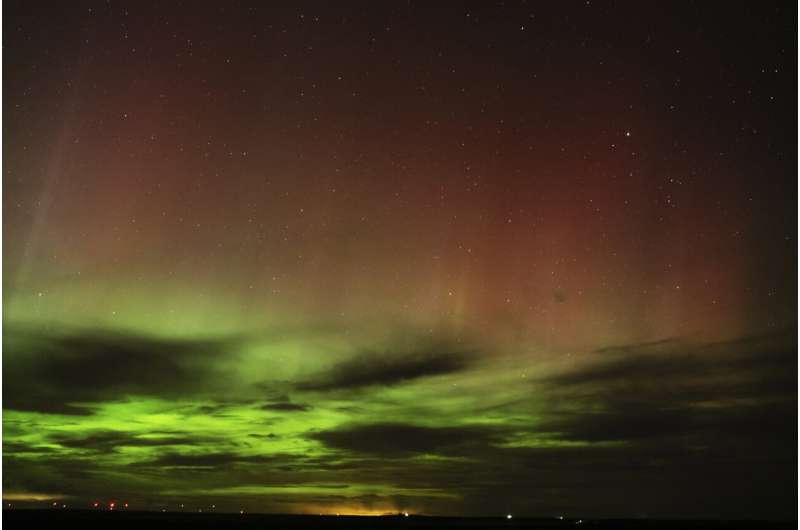This article has been reviewed according to Science X's editorial process and policies. Editors have highlighted the following attributes while ensuring the content's credibility:
fact-checked
reputable news agency
proofread
Solar storm on Thursday expected to make Northern Lights visible in 17 states

A solar storm forecast for Thursday is expected to give skygazers in 17 American states a chance to glimpse the Northern Lights, the colorful sky show that happens when solar wind hits the atmosphere.
Northern Lights, also known as aurora borealis, are most often seen in Alaska, Canada and Scandinavia, but an 11-year solar cycle that's expected to peak in 2024 is making the lights visible in places farther to the south. Three months ago, the light displays were visible in Arizona, marking the third severe geomagnetic storm since the current solar cycle began in 2019.
The Geophysical Institute at the University of Alaska at Fairbanks has forecast auroral activity on Thursday in Alaska, Oregon, Washington, Idaho, Montana, Wyoming, North Dakota, South Dakota, Minnesota, Wisconsin, Michigan, New York, New Hampshire, Vermont, Indiana, Maine and Maryland.
Auroral activity also has been forecast for Canada, including Vancouver.
Light displays are expected to be visible overhead in Milwaukee, Minneapolis and Helena, Montana, and low on the horizon in Salem, Oregon.; Boise, Idaho; Cheyenne, Wyoming; Annapolis, Maryland; and Indianapolis, according to the institute.
The National Oceanic and Atmospheric Administration's Space Weather Prediction Center said people wanting to experience an aurora should get away from city lights and that the best viewing times are between 10 p.m. and 2 a.m. local time.
Northern Lights occur when a magnetic solar wind slams into the Earth's magnetic field and causes atoms in the upper atmosphere to glow. The lights appear suddenly and the intensity varies.
A geomagnetic index known as Kp ranks auroral activity on a scale from zero to nine, with zero being not very active and nine being bright and active. The Geophysical Institute has forecast Kp 6 for Thursday's storm.
© 2023 The Associated Press. All rights reserved. This material may not be published, broadcast, rewritten or redistributed without permission.




















